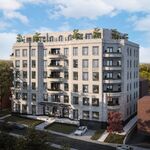That the author of the article is able to get $8 parking definitely helps in the cost equation. Most downtown parking is in the $15-25/day range, and possibly more if you leave after 6 pm (as the author seems to do). I myself play $5/day to park at Fairview Mall/Don Mills TTC station, and then have to take the subway downtown. That's $120/month parking + $121/month Metropass. Plus, I take my car downtown on nights that I'll be out late (as the author states, you can get home fairly quick in the late evening by car compared to rush hour; however, the subway is not much faster during off hours--it's just less crowded), so I'm spending easily $300+/month (not inclu. gas, insurance, etc.) and my commute is easily over an hour each way. Not cheap (in money or time) to live in the suburbs and work downtown. On the plus side, the Metropass is very useful, as I don't just go to-and-from work, but use the TTC many times throughout the week for shopping, movies, theatre, gym, etc. But I wish we could return to the days when a Metropass would get you free parking at a TTC lot. Charging public transit users to park their car is really a disincentive to use public transit in the first place.




